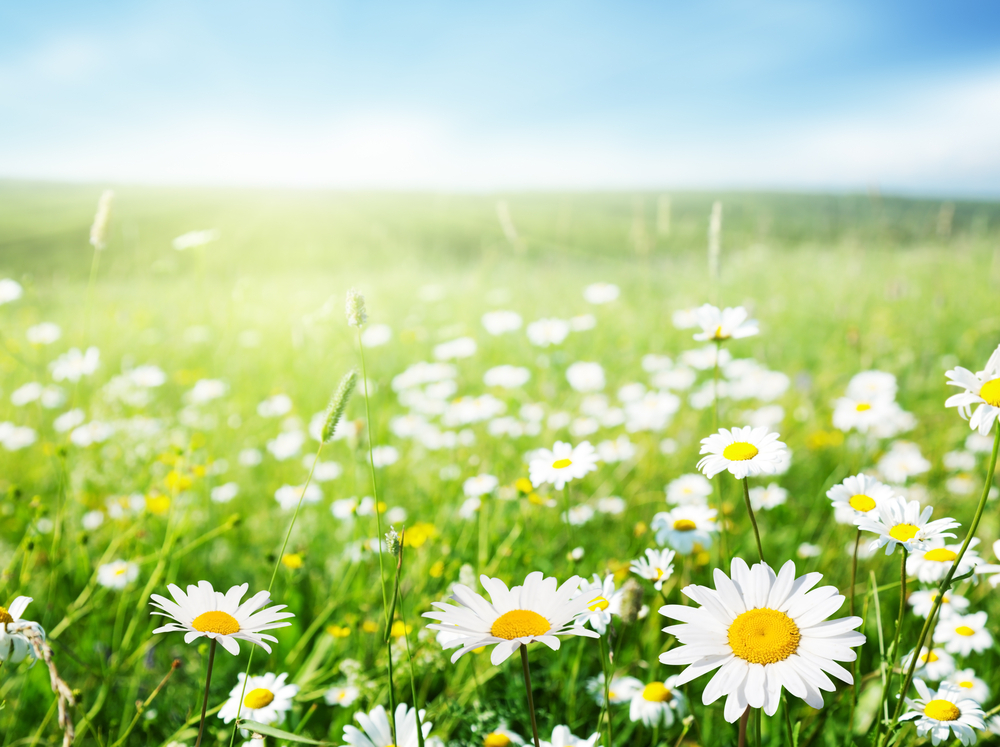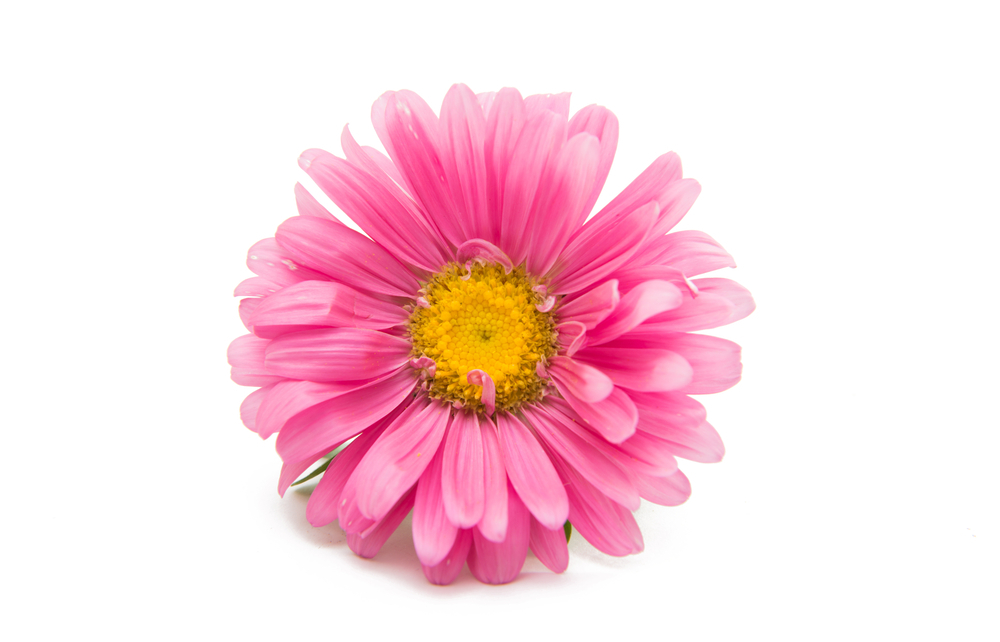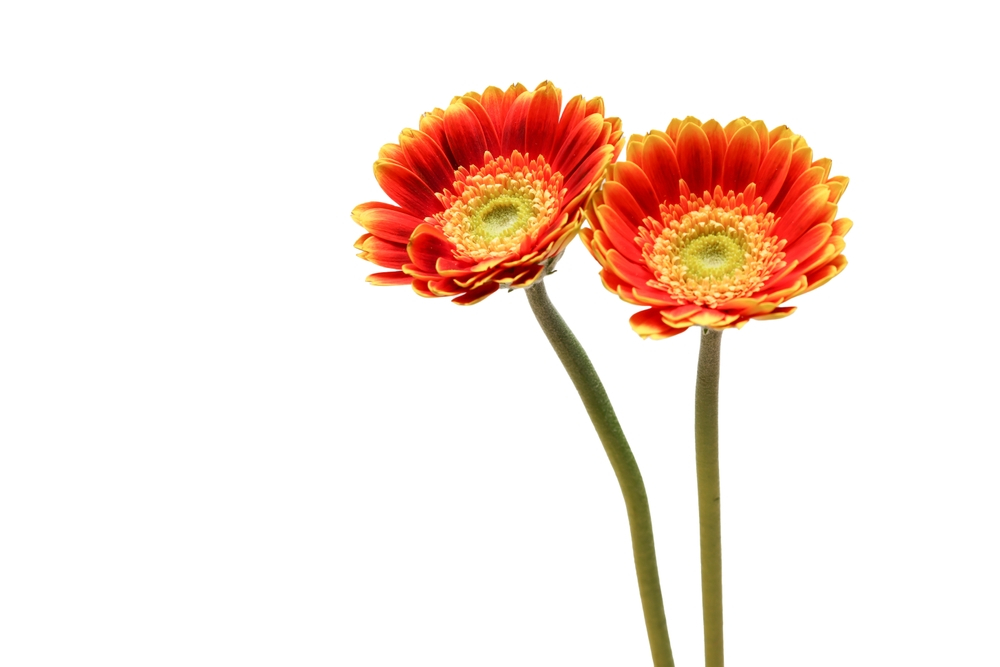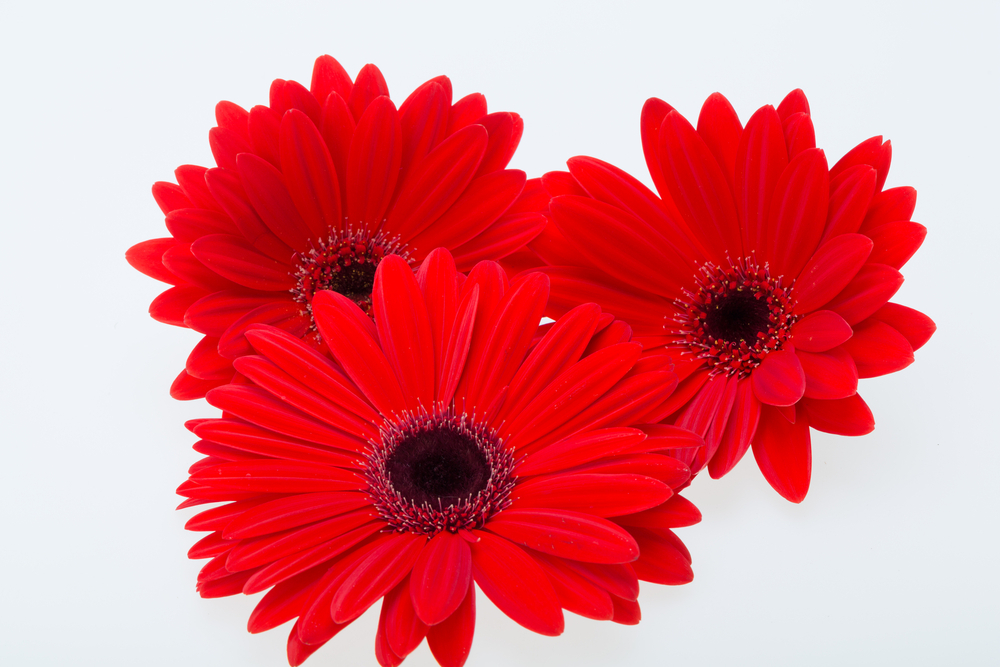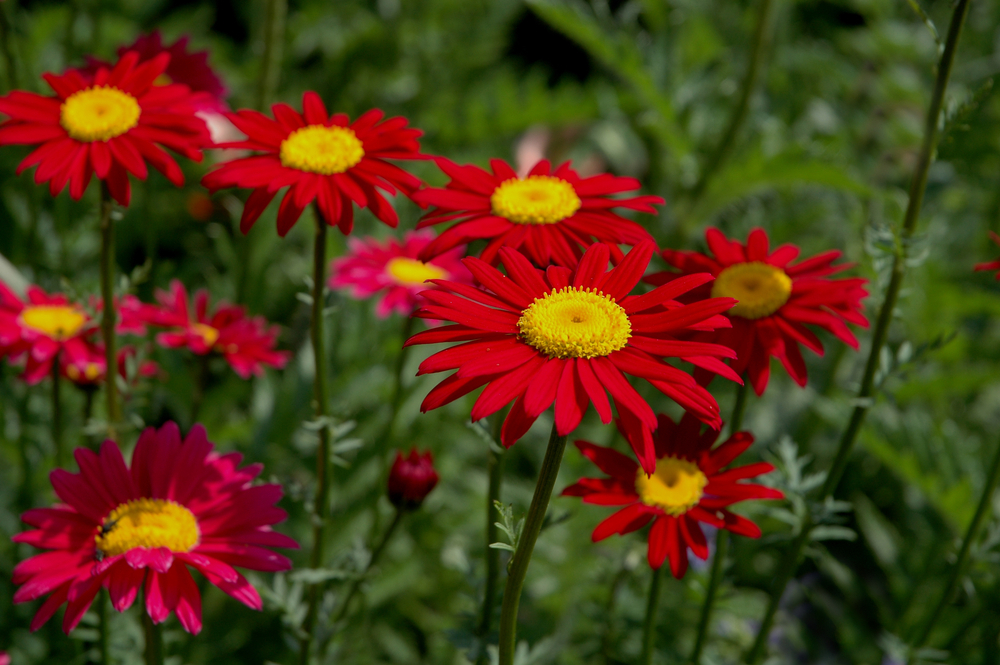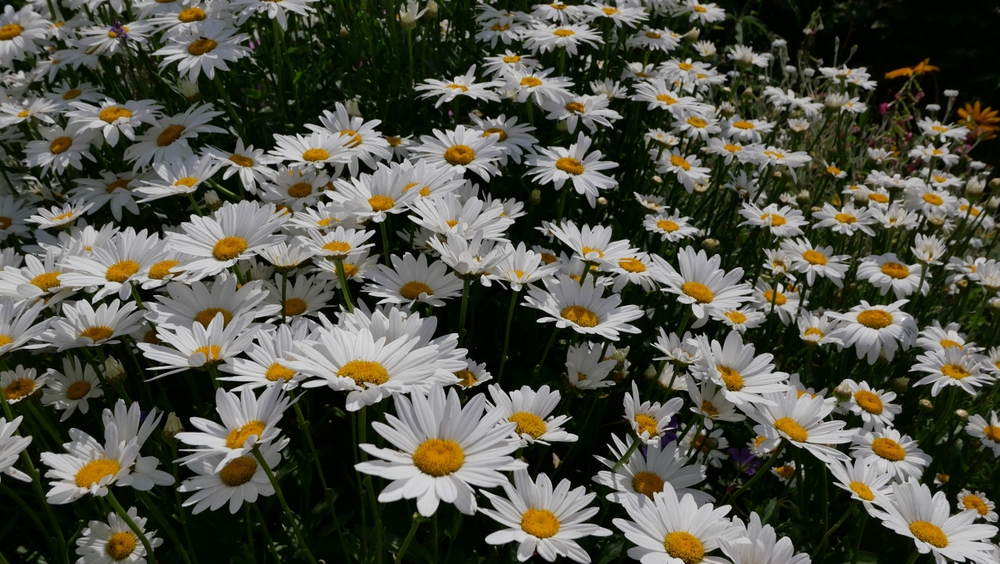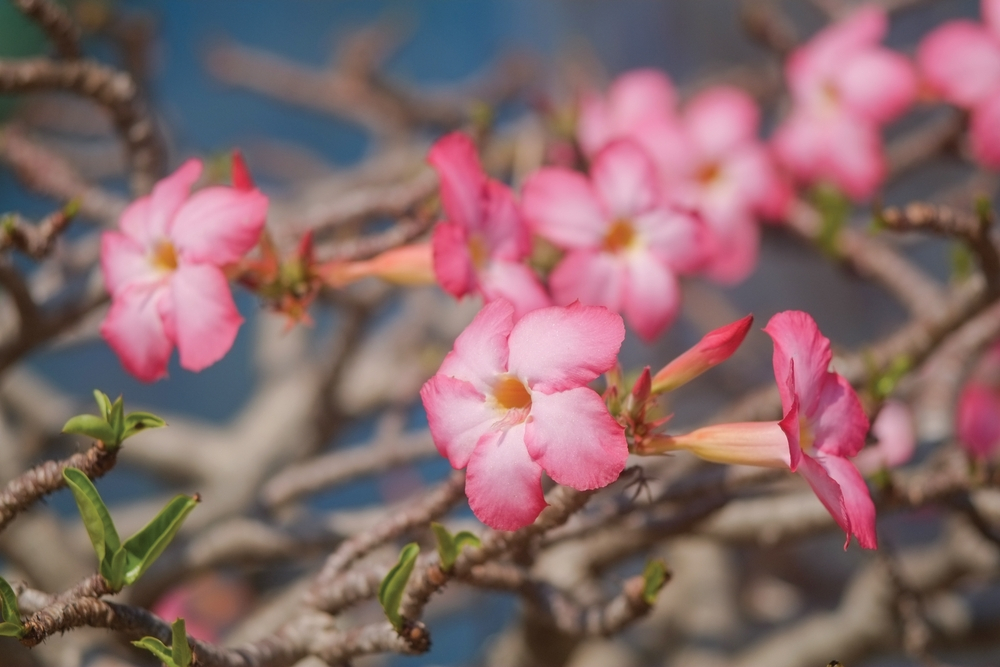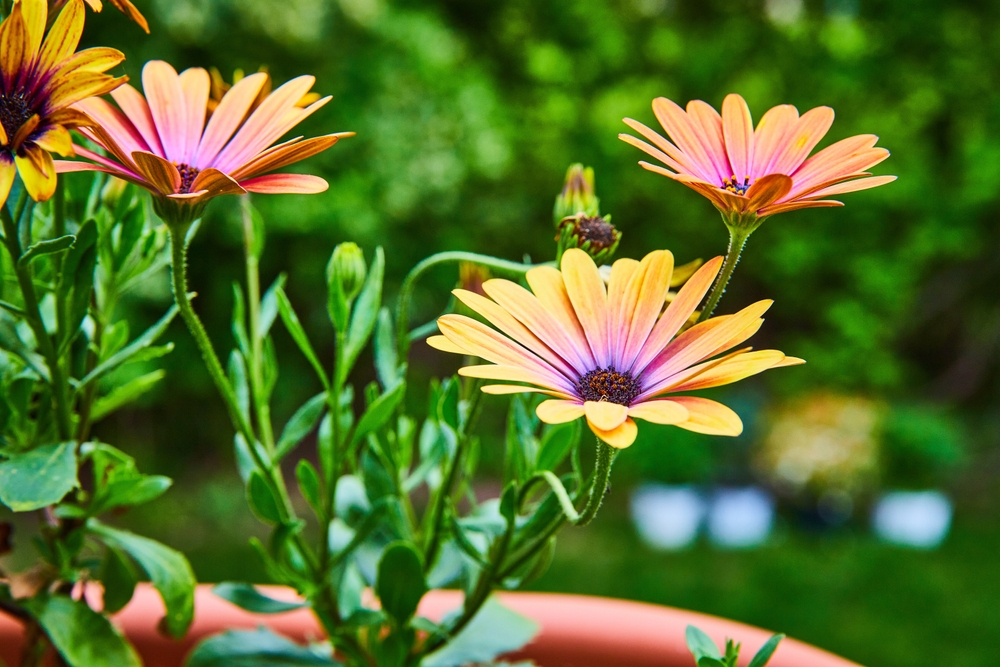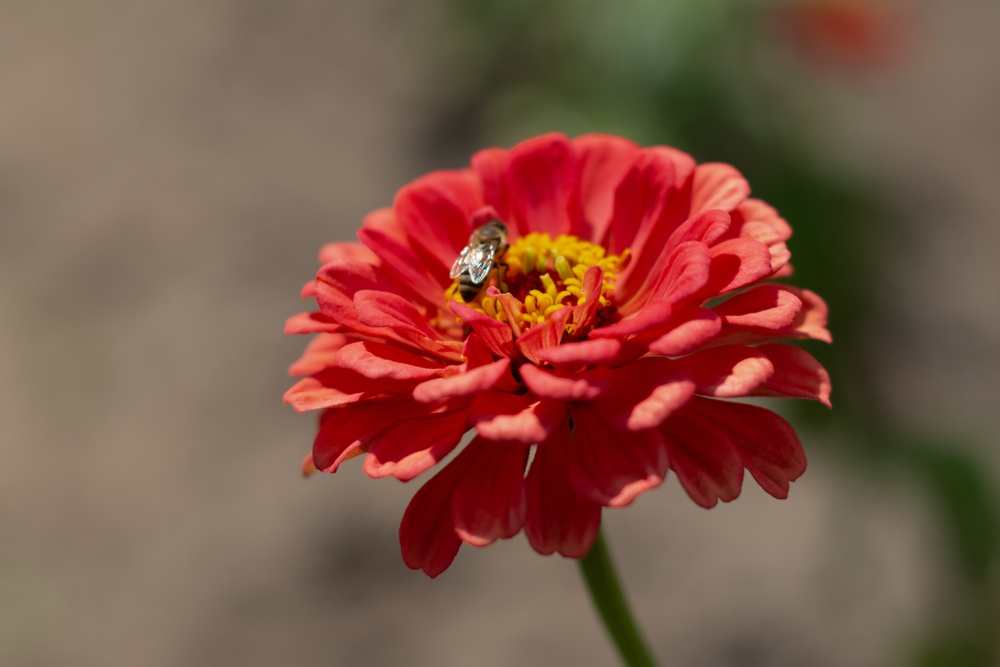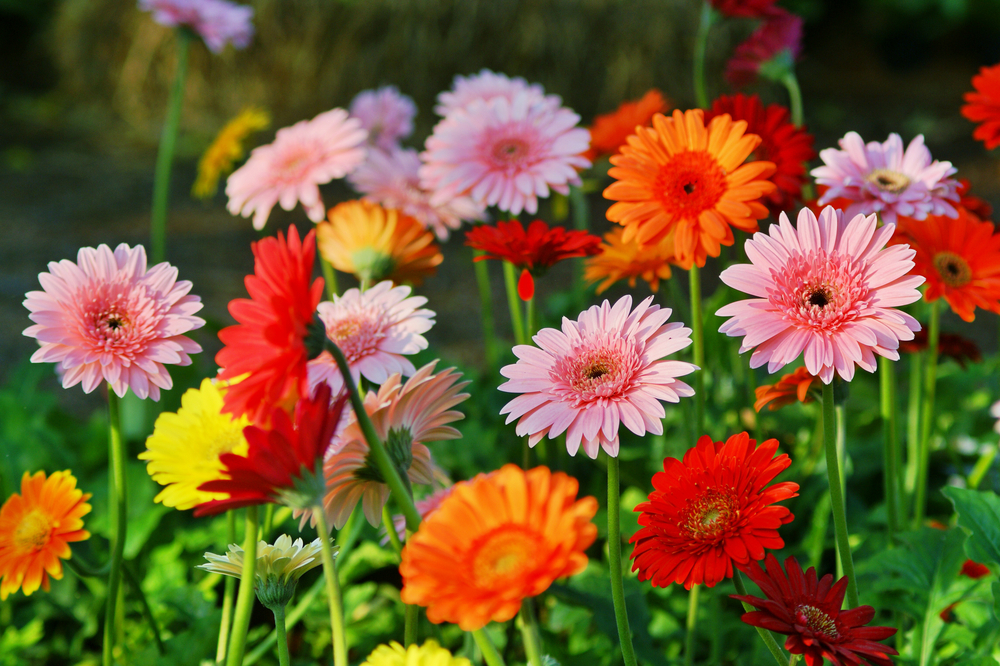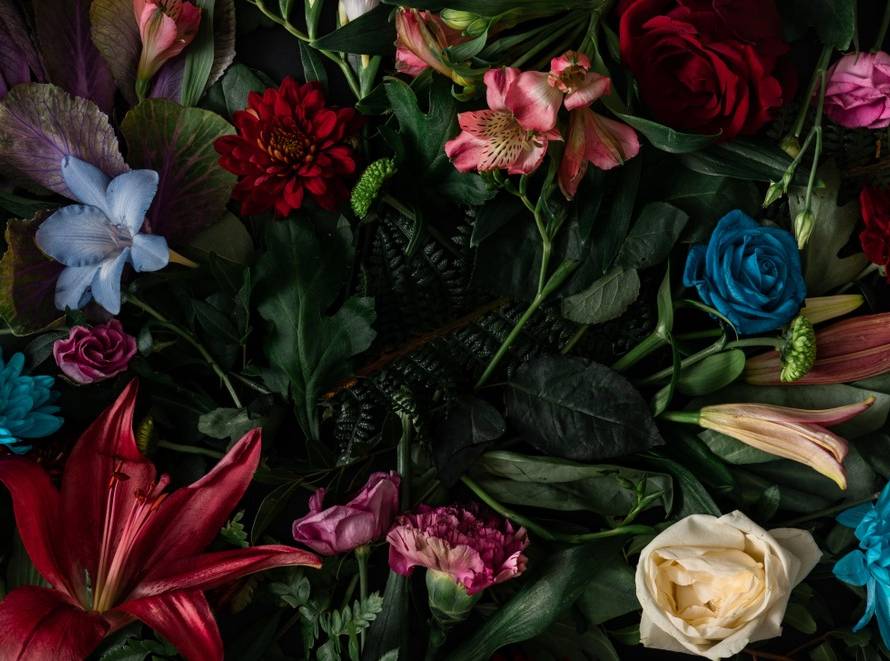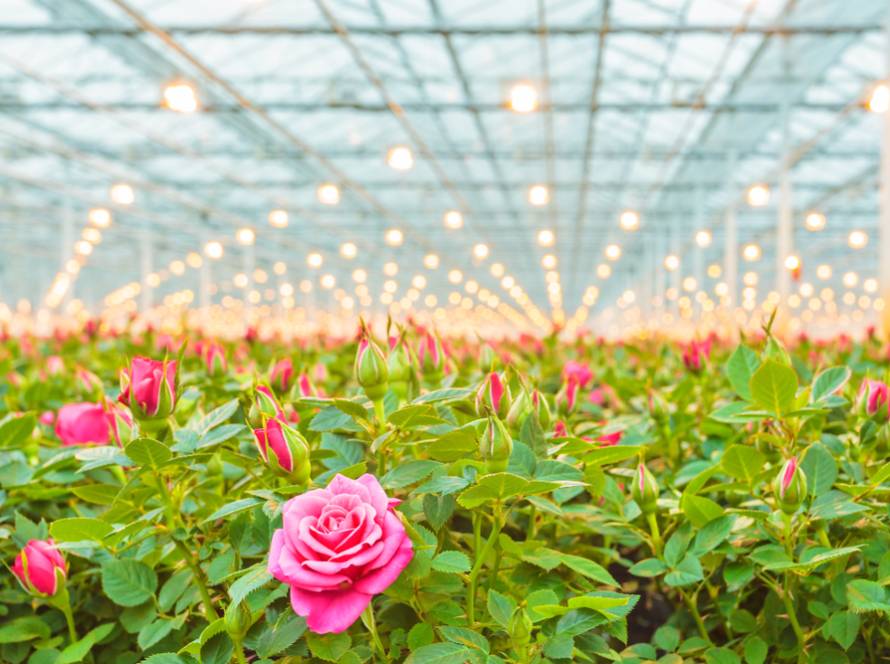Wonder how soothing is to watch flowers. Imagine the beauty of multiple shades of them but did you ever know flowers contain different meanings and symbolism. Have you ever thought, why there are particular flower options for occasions like get well, anniversary, funeral, birthdays, valentines, or friendship day etc? Today AHH Flowers bring a particular topic of “Daisy Flowers” to teach you their importance, origin, meaning and symbolism.
Equation of Daises: Daisy = Love, Beauty, Innocence, Simplicity, Purity & Beginning
Umm!!! When gorgeous small wild daisies start to sprout up all across, understand summer is just around the corner. Every time we see a daisy, it’s difficult to suppress a smile. How beautiful the sight is, also, you must have made a small daisy bouquet yourself in childhood, right? The adoration of daisies dates back thousands of years. Additionally, they conceal a variety of intriguing meanings. So, discover the beauty of daisies flower with AHH Flowers.
Daisy Flower Origin, Meaning and Color Symbolism with AHH Flowers
History/Origin of Daises
The term “daes eage,” which means “day’s eye” for daisies appeared in Old English. This is due to the fact that at night the petals would cover over the yellow centre and reopen during the day. ‘Fresh as a daisy‘ is a phrase you may have heard. This is where it originated since it indicated that someone got a restful night’s sleep. The daisy is said to have originated in Europe and Asia, and it was originally mentioned in Greek mythology.
The existence of daisies dates back a very long time. Since a minimum of 2,200 B.C. It is generally known that they were grown in the gardens of the ancient Egyptians as herbal treatments. Many people thought that eating daisies might reduce fever, gout, and stomach ulcer discomfort. Wild daisy tea, which is still available today, is touted as a natural remedy for coughs, bronchitis, as well as general discomfort and stiffness.
Depending on the kind of daisy you’re referring to. The ox-eye daisy is native to regions of Asia as well as Europe, the Gerbera daisy is native to Africa, and the common English daisy, sometimes known as the pink paper daisy, is native to Australia.
Daisies are a diversified and widely distributed group of flowers, with the exception of Antarctica.
Daisy Flower Meaning & Symbolism:
Daisy flower and daisy meaning is worth exploring knowledge. Daises flowers are peak summer blooming with multiple shades that gives you vibe of freshness. These bright springtime blossoms have a number of uplifting connotations. A daisy flower can represent innocence, joy, happiness, fresh beginnings, and purity.
Daisy was a Victorian emblem for devotion, innocence, and the capacity to keep secrets. Giving someone a bouquet of daisies might be interpreted as telling them their secret is safe with you in accordance with the flower language, or fluorography.
Daisies in Mythology
The daisy may symbolize a variety of things depending on where you are in the globe and what mythology you are interested in for example, there are several origin where legends brought daisy’s notion:
Mythology in Rome
The Romans connected the daisy with Belides, a nymph who was being relentlessly chased by Vertumnus, the god of seasons and gardens. Belides didn’t want to drive Vertumnus away because she was so non-confrontational. She still needed to get away from his shady attention. So, what exactly did she do? She transformed into a daisy! She was still gorgeous, but she didn’t have to worry about Vertumnus chasing her. The narrative is about the lovely and innocent Daisy.
The Norse Mythology
The love goddess Freya gave the daisy significance to the Vikings. Because the daisy was Freya’s favorite flower, it took on her significance. Daisy was connected with love, sensuality, and fertility since it represented motherhood and childbirth.
Mythology of the Celts
Daisy had a unique importance in Celtic mythology as well, albeit it was a bit bittersweet. According to legend, when a child died, the Gods showered daisies on the Earth to console the parents. While no flower could ever make up for such a tremendous loss, the flowers did bring a smile to the parents’ cheeks.
Christianity
In Christian tradition, the daisy has long been identified with the Virgin Mary. This is due to its connotations of purity, virginity, and humility.
Old English
The flower’s present name is derived from its Old English name, “day’s eye,” which was abbreviated to what we know it as today. It was given this name because of its likeness to an eye, which closed at night and opened again in the morning. This phenomena also gave rise to the phrase “fresh as a daisy” to describe someone who wakes up feeling bright and eager to go.
What Does A Daisy Symbolize?
Daisies have a wide variety of meanings since they have been around for such a long time and there are so many different varieties. The most typical ones, however, are:
- Nobility, Innocence and Purity
An ancient Celtic myth states that when a baby died, God would scatter daisies throughout the landscape as comforting flowers. Since then, daisies have come to symbolize purity and innocence.
- New Beginning
The daisy is regarded as the sacred flower for the goddess of love, beauty, and fertility in Norse mythology. As a result, daisies represent childbirth, motherhood, and fresh starts. Therefore, they make wonderful flowers to send to greet a new baby!
- Real Love
Daisies are composite flowers, which means they are actually two blossoms of love (couple) that have harmoniously merged (by wedding), denotes togetherness. They understand what genuine love is. Daises are a fantastic flower choice if you’re planning to send flowers as a romantic gesture or for an upcoming anniversary.
What Are The Different Colour Daisy Meanings?
Although you might only be aware with the traditional white daisies, there are many additional hues available. Of course, every shade has a unique significance. Those little garden flowers with white petals and bright yellow centres are probably what the majority of us picture when we think of daisies.
These are Bellis perennis, usually referred to as common daisies or English daisies. The only colours that English daisies often come in are white and pink. However, there are several varieties of daisies and flowers with the word “daisy” in their names, including gerbera daisies and the native Australian daisy known as brachyscome.
These are available in a variety of hues, all of which have:
White daisy
White daisies, like the majority of white flowers, symbolise purity and innocence due to their cheery aspect. White daisies may be used as wedding décor or as part of the floral arrangements, and they look stunning in spring weddings is sent as a bouquet of congratulations to newlyweds.
Pink daisy
Pink daisies symbolise gentility, affection, and romance. Pink daisies are the perfect flower to present to someone special in your life or to express your sentiments. They represent feminine energy as well, making them ideal gifts for any lady you adore. As a delicate reminder of your affection for someone else or as a memento of your relationship, you might give these hues to your mother or closest friend.
Blue daisy
The rarest daisy flower, the blue one stands for honesty, loyalty, and trust. Sending blue daisies to a friend, long-term lover, or member of your family that you value much symbolises long-term devotion and trust. Even if it’s difficult to find these daisies, it’s not impossible. They resemble asters, which are really a member of the daisy family, in appearance very much.
Orange daisy
Orange daisies stand for pleasure, friendship, happiness, and warmth. The happiest kind of flowers to gift and receive are those! With a bunch of vibrant orange daisies, you can instantly brighten someone’s day.
Yellow daisy
A yellow daisy flower stands for friendship, happiness, cheer, and best wishes. Similar to their cousin, the sunflower, yellow daisies make the ideal “get well soon” flower.
Red daisy
A profound romantic love, especially one that is passionate and long-lasting, can be symbolised by a rich, ruby-red crimson daisy blossom. These are ideal for giving as gifts in a long-term relationship or to someone you appreciate. A bouquet of red daisies can be presented to symbolise your unwavering love and dedication if you have been together for a long period.
Purple daisy
Purple daisies convey your thoughts to someone while also conveying spontaneity, peace, unity, and good times. These are also available in dark purple colours and can be given as a token of apology or reconciliation. Purple flowers represent pride and royalty as well.
What are the Popular Types of Daisy Flowers
The daisy family includes a wide variety of blooms and daisy varieties. Some of fav daisies are listed below:
Painted Daisy:
In a garden or natural environment, the Painted Daisy is able to bloom in vivid colours for weeks at a time. The characteristic daisy pistil centre is surrounded by a ring of petals. The watercolour and paintbrush hues of the daisies’ flowers give them their name. In the summer or fall, you could observe vividly blooming painted daisies in shades of magenta, white, red, and yellow.
Although painted daisies are a favorite flower of butterflies and are a wonderful addition to butterfly gardens, you should be warned that the leaf sap is harmful to people and certain dogs. They are easy to maintain and won’t spread too quickly in a garden environment.
Namaqua Marigold Daisy
The vivid yellow and orange flowers of this African daisy are known to draw birds. It owes its size and life cycle as an annual spring bloom, which attracts birds, as well. The Namaqua Marigold’s seeds are exceedingly light, which aids in their long-distance wind dispersal. On sandy flats and slopes close to beaches and capes, they are frequently spotted in the wild. It already has seeds in the ground waiting for favourable conditions by the time summer rolls around. It can tolerate summertime temperatures.
English Daisy:
Due to its propensity for growing on lawns, the English daisy is often referred to as the lawn daisy. When grown outside, this flower prefers shaded areas and colder temperatures between April and June. Due to their rapid rate of reproduction, these daisies are frequently seen as weeds and a nuisance to other plants in the United States.
Desert Star Daisy
This annual plant is indigenous to the southwestern deserts of the United States and is also referred to as the little desert star. It grows flat on the ground at first from a taproot and has stems that are either yellow or green. The desert star daisy is a little plant that never gets longer than a centimeter and has tiny green leaves. It has a golden centre, a blue tint, and can be white or rose-hued. It produces single flower heads with ray and disc floret variations.
Cream African Daisy
It derives its name from the white and creamy blooms that bloom in the spring and summer and has woolly hairs that are grey or green. Each of the beautiful blossoms has an eye that is steel blue and is surrounded by a ring of yellow, giving it a stunning look.
Botterblom Marigold Daisy
The light green branches and leaves of this South African daisy, which grows quickly, give way to a cheery yellow daisy blossom that blooms almost all year long. Its petals have a purplish-brown underside, and on overcast days or when the light isn’t shining as brilliantly, the flower buds close. Botterblom Marigold Daisy is a highly resilient plant, and when used as a vase flower, its colours may persist for several days. Tiny, brown seeds develop for about a month before they fall to the ground. The majority of soil types, including clay and sand, are suitable for these seeds.
Blushing Daisy
This daisy has a stunning mauve purple blossom with a black centre. It has no stem and develops many, throng-like brown roots. In South Africa’s grasslands or rocky soil, you may find this daisy, which draws honeybees. Even steep slopes and moist places are home to the blushing daisy, where it thrives in situations of moderate to heavy rainfall.
Blue-Eyed African Daisy
This daisy has a distinctive eye ranges in colour from grey to vivid blue and is encircled by a yellow ring in a white blossom which gives it its name. The blooms appear to be blue eyes protruding from the ground due to the colour scheme used. When it’s gloomy or later in the day, these flower buds lock up, but when it’s warm and sunny, they completely open. They can tolerate dry circumstances and less-than-ideal soil, but they are not prepared to withstand cold winters.
Pitch Daisy
These daisies, often called African daisies, Cape marguerite, or Cape marigold, are the most common owing to their year-round availability and lengthy vase life. Cape daisies are cherished for their two rows of overlapping petals and their assortment of colour gradients in the core. They might be a striking shade of pink, purple, orange, yellow, or red.
Gracious Daisy
You might have seen different framing pictures with beautiful white border and yellow inner. This is called gracious daisy. The Gloriosa is an easy-to-grow plant that grows to a height of 90 cm, making it ideal for luring bees or butterflies to your house. It is a hardy flower that can withstand the winter and goes by the name “black-eyed Susan” because to the black core. These rich, bicolor daisies have delicate yellow outer petals and a deep-toned heart.
Daisy Shasta
The Shasta daisy is similar to the English daisy, but it may grow up to 90 cm tall and has a bigger yellow heart. This daisy has to be controlled and kept out of natural places since it grows aggressively as well. Since they may survive for more than a week in floral arrangements, they also make lovely cut flowers.
Gerbera Daisy
The unsung champions of flower design are these giant daisies. They have a lengthy vase life, sometimes lasting up to 12 days after cut, and they are available in a variety of colours, including white, pink, yellow, orange, and red. They brighten whatever space they are in with their cheerful looks. Gerbera bouquets are the ideal get-well-soon, birthday, or just-because present.
Australian Paper Daisy
These native blossoms, often referred to as strawflowers and everlasting daisies, provide a tonne of colour to spring gardens. Once cut, they retain their beauty well, so you may admire them in a vase for several days. Australian paper daisies often have golden yellow centre and come in lovely colours of pink, yellow, and white.
Is the Daisy Flower Edible?
Common English daisies may be used in a variety of dishes, including sandwiches, soups, salads, tea, dessert garnishes, and even wine. Feel free to explore whatever you wish, although they are reported to have a spice and nutty flavor. Sunflowers, calendula, camomile, and dandelions are other edible flowers in the daisy family.
Just make sure the flowers were raised with the intention of being consumed; you shouldn’t eat a daisy picked up off the side of the road or even one from a bouquet since you never know what types of pesticides or other potentially harmful substances could be on those petals.
How to Care for Your Daisies?
The daisy, with its various colour variants, is ideal for creating bright flower displays. The clever combinations are limitless and will provide a warm welcome to any guests to your home. Daisy flowers being an eye-catching addition to any area, may endure up to 14 days in a vase if properly cared for.
Here are some suggestions to make daisy vase.
- The stem’s base should be correctly trimmed at an angle so that it may absorb more water.
- Any foliage and low-hanging leaves in your vase that will be below the waterline should be removed.
- Fill a vase with fresh, cold water until it is 3/4 full, and if any flower fertilizer is available, add it as well.
- Check your vase’s quality and water level frequently.
- The presence of germs is indicated if the light turns cloudy.
- Refresh the water and add additional flower food every two days.
- Daisy stems are prone to wilting, so to keep them able to absorb water, clip the ends of the stems again every one to two days.
What are the Medicinal Uses of Daisies?
The daisy is one of those several flowers that can be used medicinally. In the 18th century, doctors used daisies to treat wounds. The daisy was also utilized by King Henry VIII to treat his fever, gout, stomachaches, and eye problems. Nowadays, some individuals use daisies for muscular pain, inflammation, renal issues, and coughs. To find out if the daisy is safe for you, consult a doctor especially if you’re thinking about using it as medication.
When Should You Gift Daisy Flowers?
Daisy is the birth flower of April, making them ideal for presenting to your April-born friends and family. Daisy is the traditional flower on a fifth wedding anniversary. Daisy flowers, which represent purity and innocence, make nice gifts for baby showers and weddings. Because daisies are such bright blossoms, they would also make an excellent present for someone who is ill or feeling under the weather. Daisy bouquets are a sure-fire way to make their day.
Facts about Daisies:
Meaning for daisy can be various like symbolism of the daisy but facts are fun reading.
Here are some interesting daisy-related facts:
- Honeybees and bumblebees benefit from the excellent food supply that daisies offer like having kids around.
- Daisies grow almost everywhere.
- A daisy is really made up of two blossoms. The cluster of small yellow disc petals that make up the ‘eye’ counts as one flower along with the multicoloured petals.
- The “vascular plants family,” one of the biggest plant groups in the world, includes daisies. This implies that they can move water and nutrients across the plant.
- Due to their propensity for flourishing in typically cold climates and their resistance to the majority of insects and herbicides, certain daisies can develop into significant weeds if left unchecked.
- In homoeopathy, daisies are occasionally used to relieve back pain and hasten the recovery process following surgery. Animals’ wounds are also treated with it.
- Daisy flowers contain a lot of vitamin C.
- Daisies are a biennial plant, which means that its life-cycle ends after two years.
- The flower for April is the daisy.
- Daisy blooms are perennial.
- Except for Antarctica, they are present everywhere on the planet.
Conclusion:
Daisies may not be as showy as other flower varieties, but everyone always smiles when they see them because of their vibrant yellow centre. We offer you the variety of daisy decorations specially daisy bouquet for your loved one. What if you enjoy daisy drawing, daisies aesthetic and decoration together which makes you feel bloomed and happy. We hope you enjoyed reading daisies flowers details especially daisy’s origin, meaning, & symbolism. Daisy flower meaning varies but their impact is permanent. Select your favorite daisy symbolism & in bonus you ca avail the services of Poster Guys for scenic posters.
Read about other flowers and enhance your knowledge with the symbolism of white flowers, yellow flowers, lilies and red roses.




